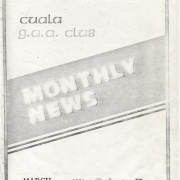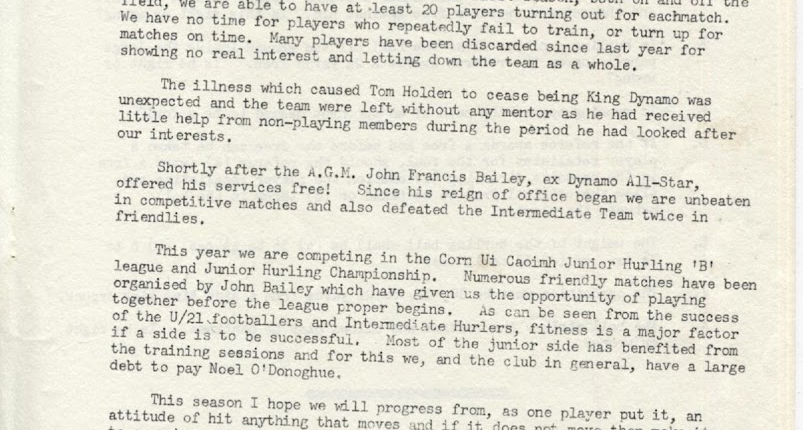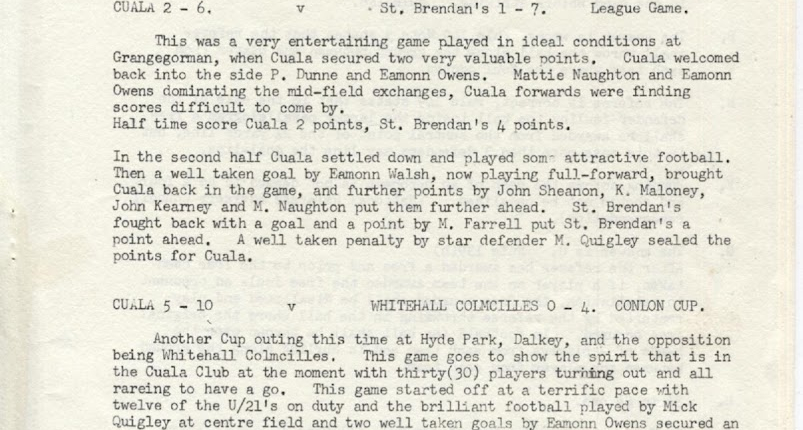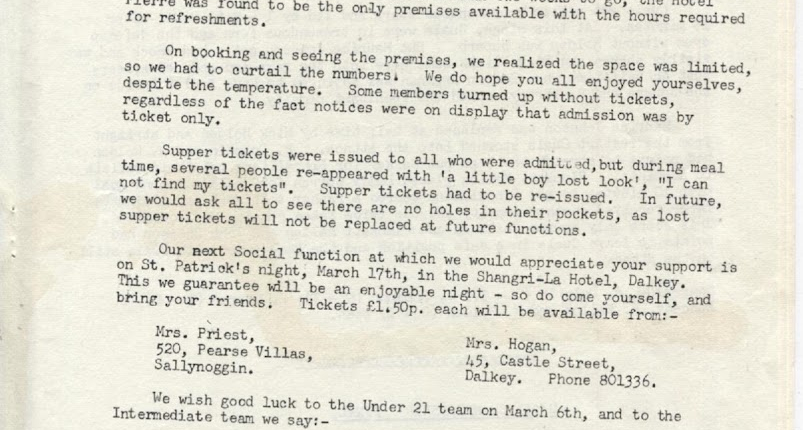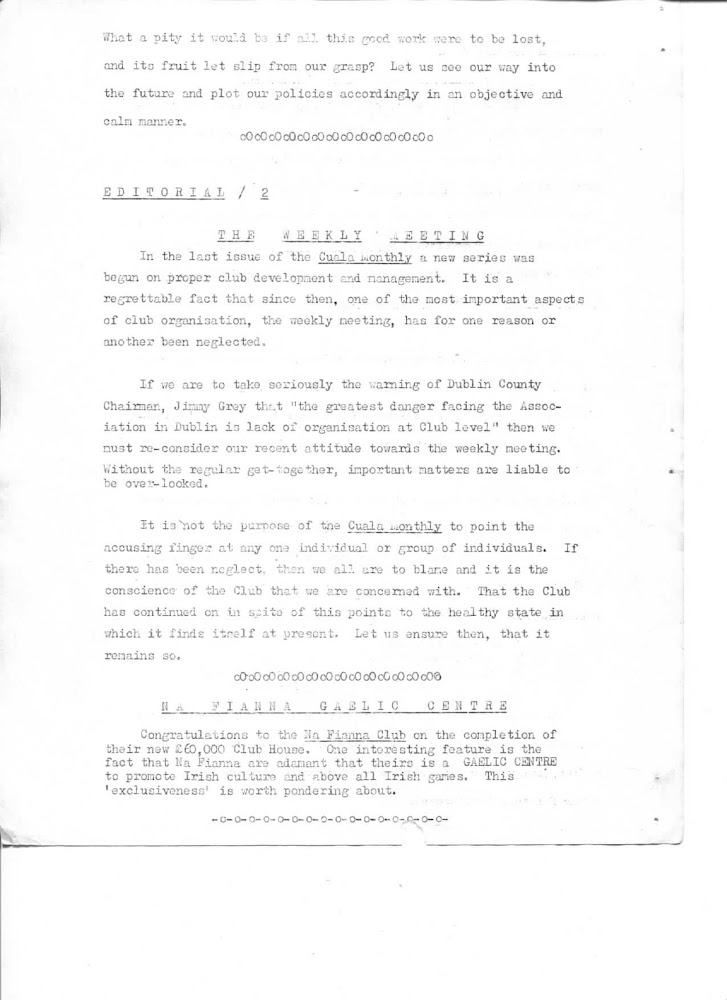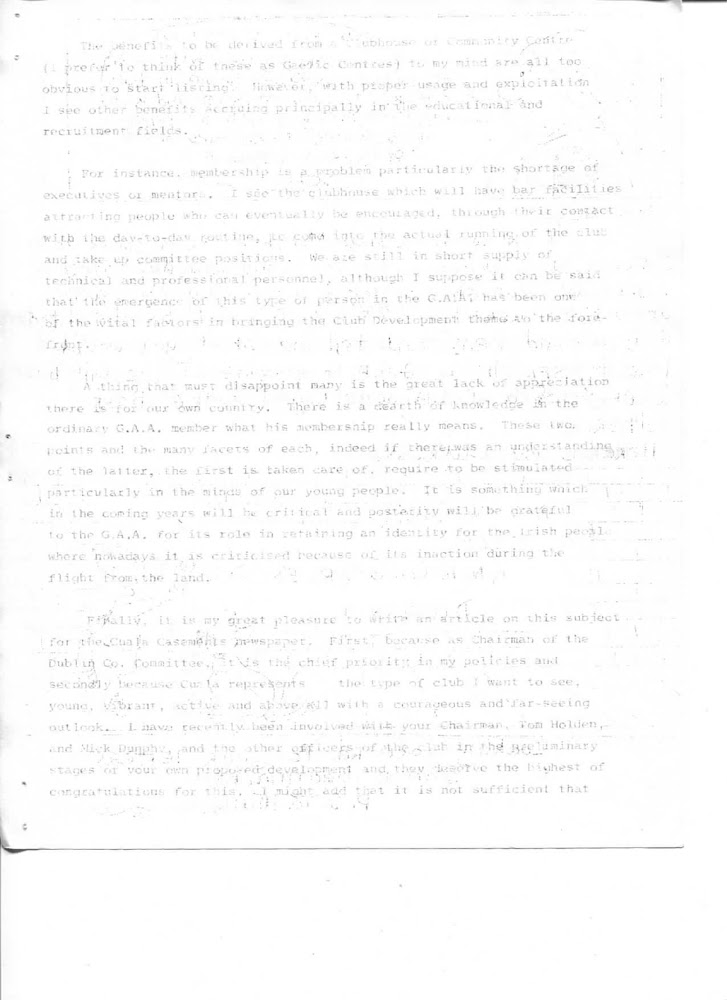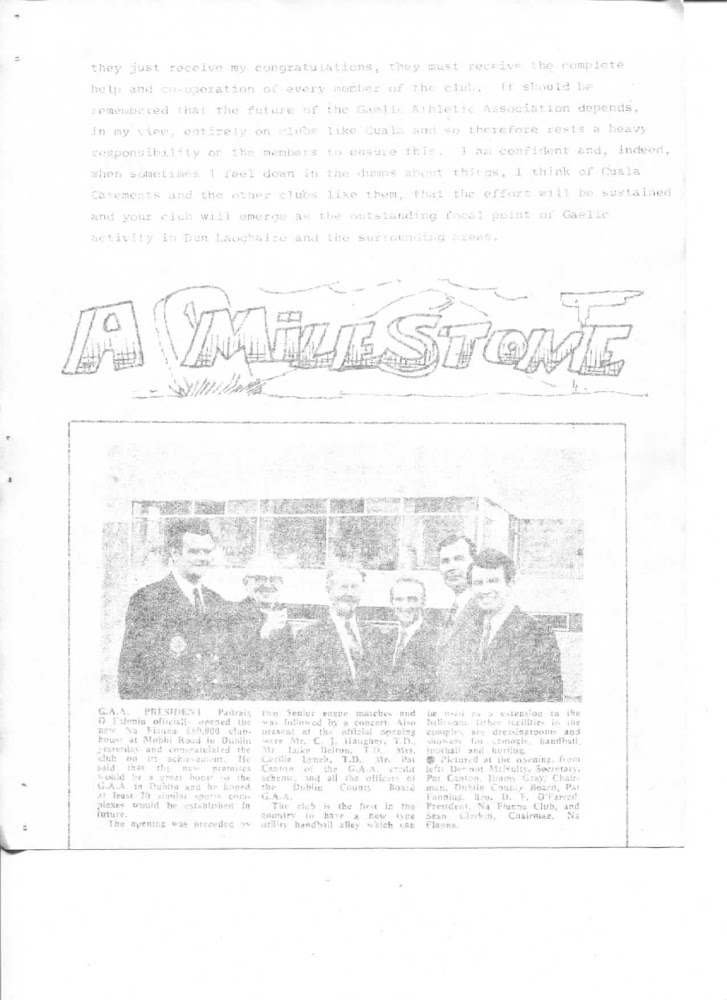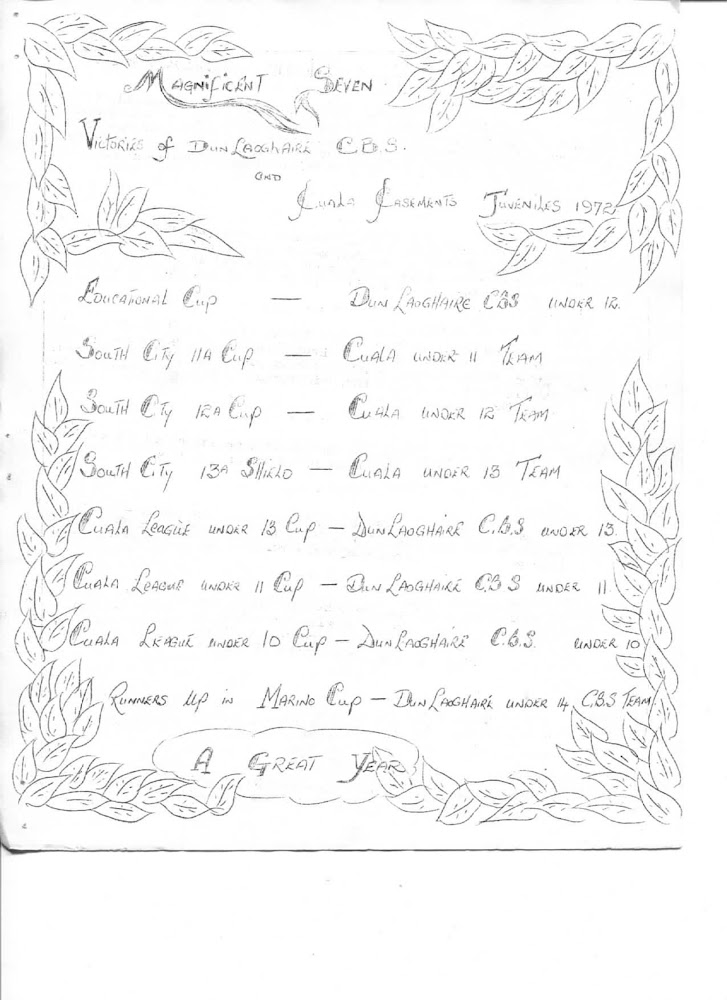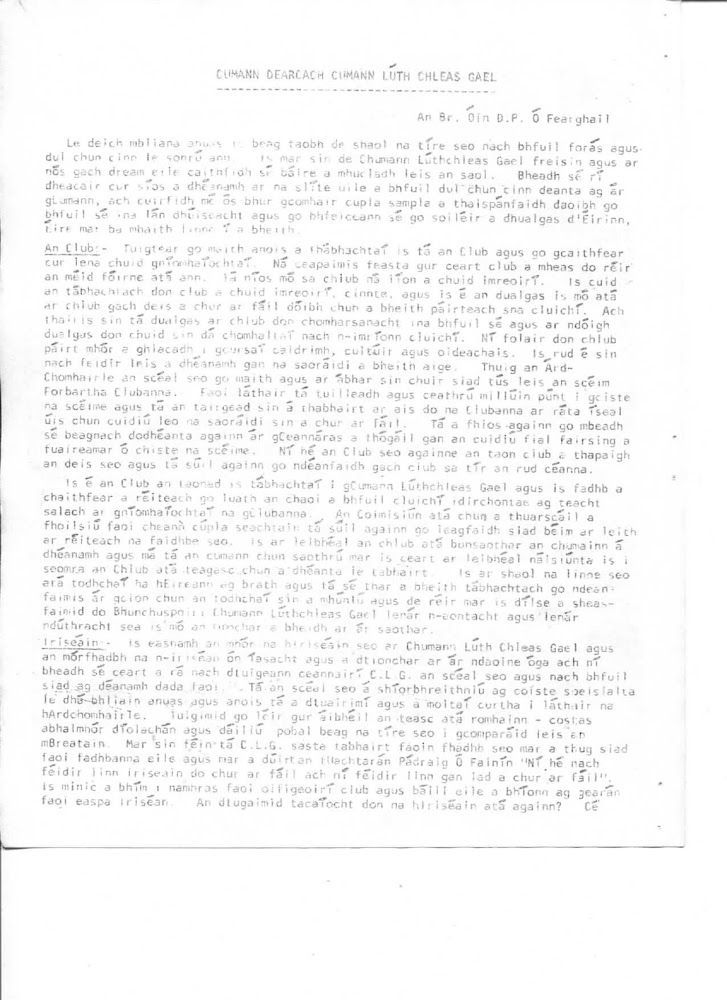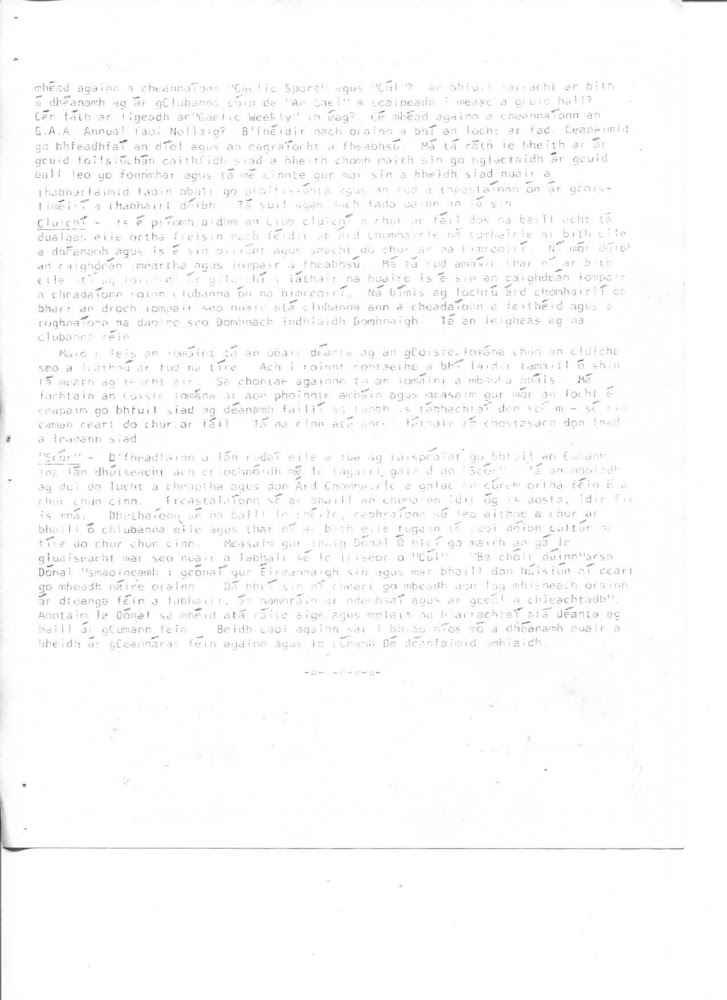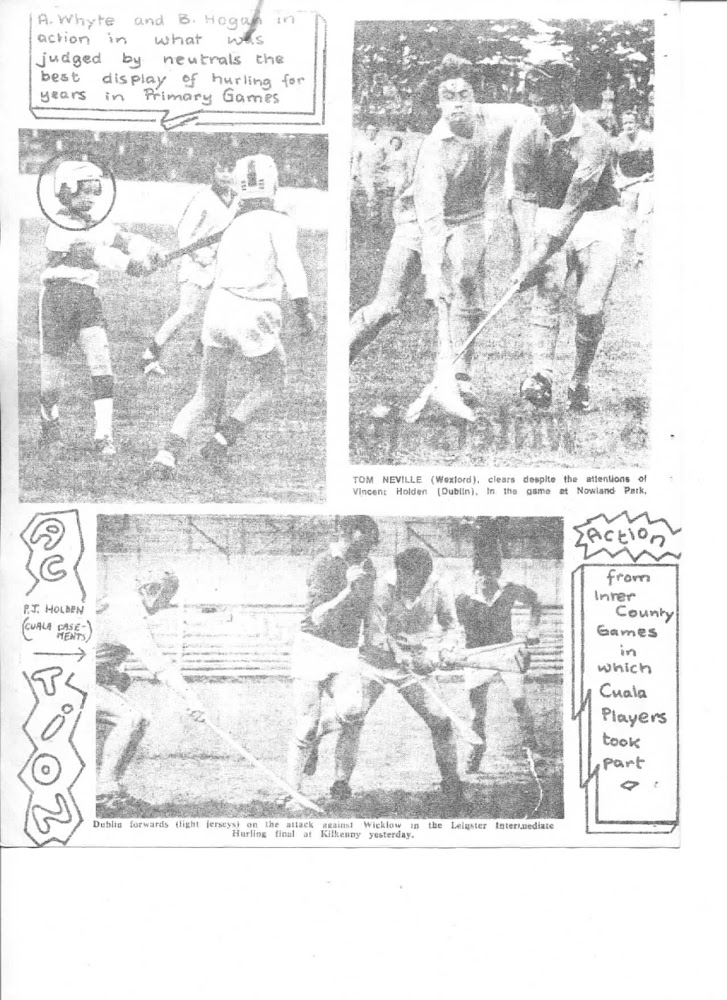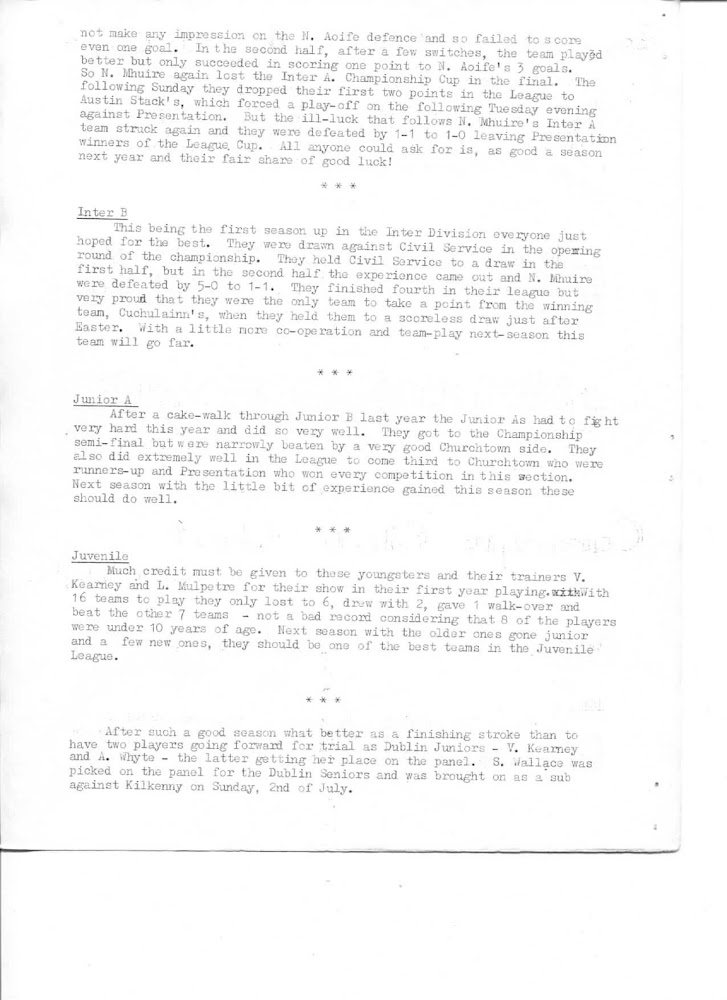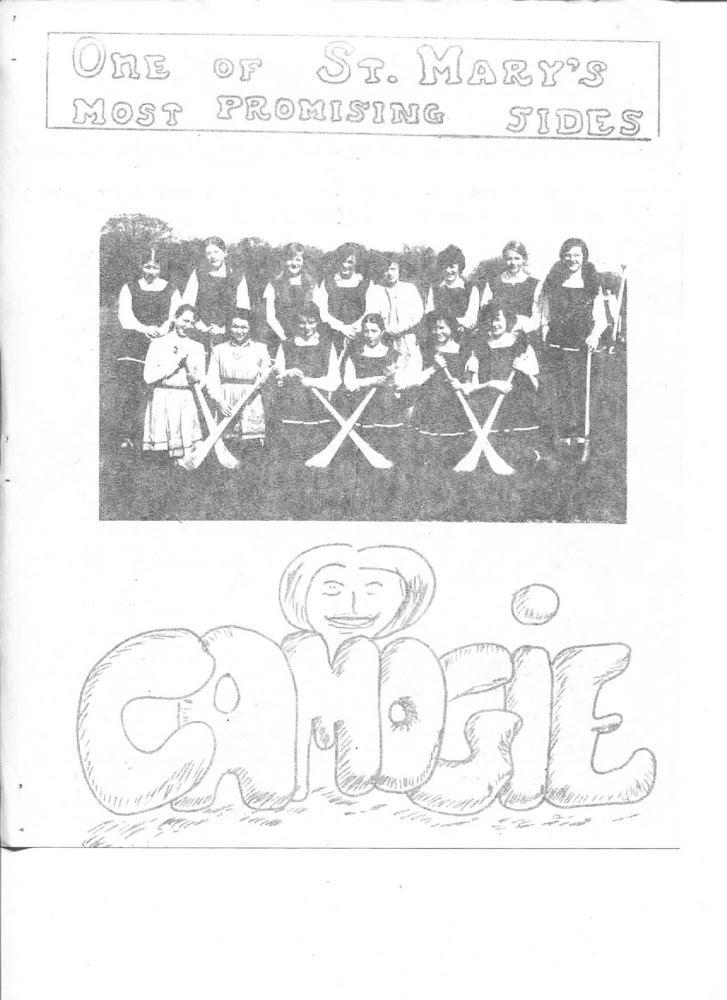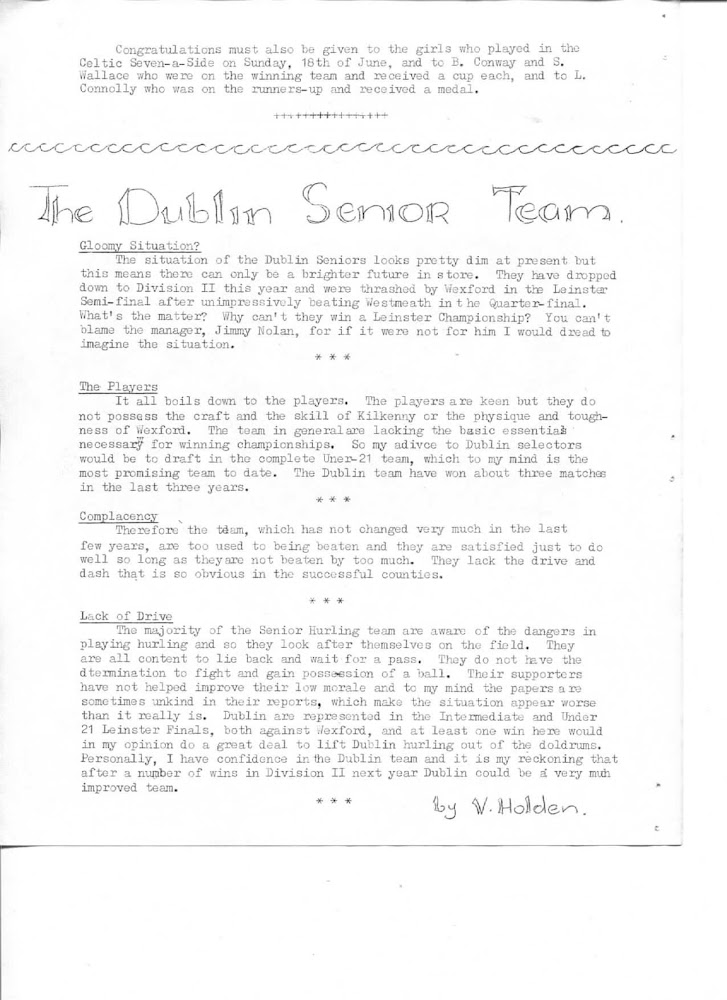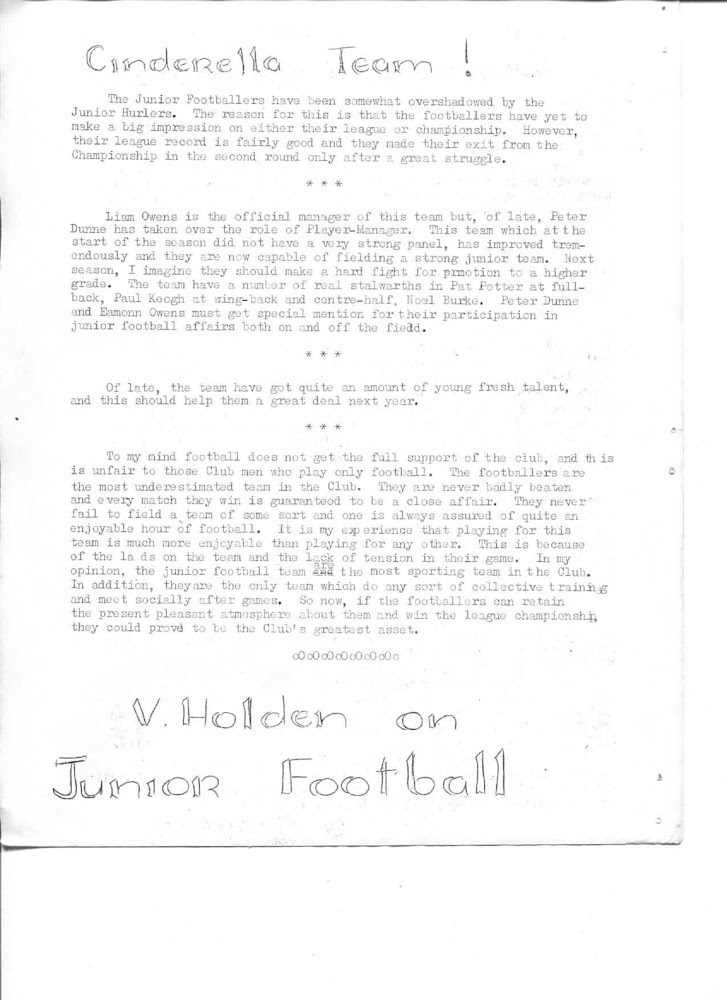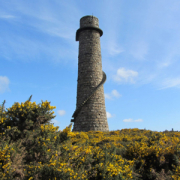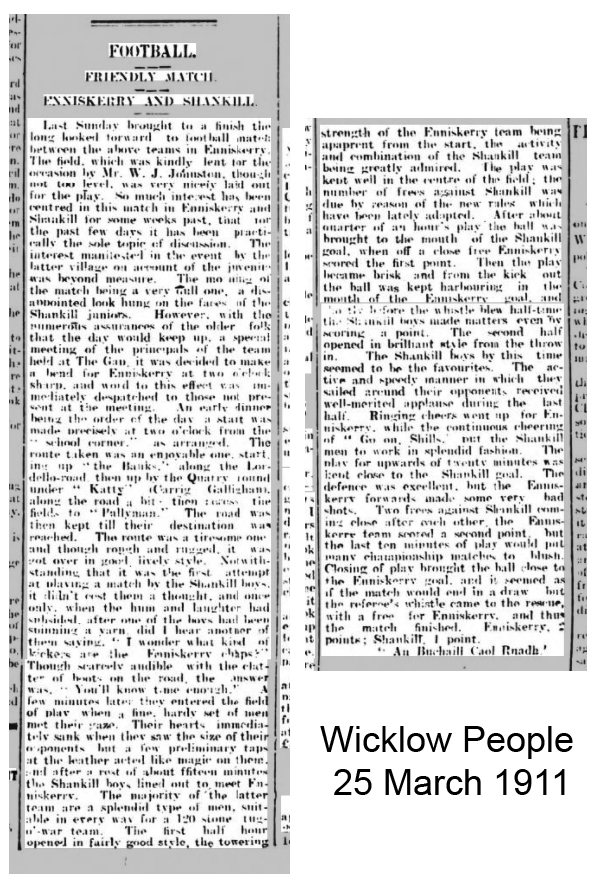This is a revised and updated version of an article that was first published in Oct 2017
The Marian Leagues were originally run across parish schools in South Dublin and North Wicklow from as early as 1953 (a year before the Marian Year) until 1973. The system operated independently of the GAA until 1960 when it came under direct formal control of the Leinster Council; uniquely the first such competitions body in the GAA not to be controlled by a County Board. Schools participating in the Marian Leagues included –
- Ballybrack
- Blackrock
- Bray
- Dalkey
- Dundrum
- Dunleary
- Enniskerry
- Foxrock
- Glasthule
- Glencullen
- Greystones
- Kilmacanogue
- Kilcrony
- Monkstown
- Newtownmountkennedy
- Ringsend
- Sallynoggin
- Sandyford
- Shankill
- Stillorgan
Some of the smaller schools combined (e.g. Kilmac & Enniskerry) at certain age categories. And some Clubs participated too (e.g. Bray Emmetts, Wolf Tones (Bray), Foxrock Geraldines) and, in later years, Dalkey Mitchels and Cuala Boys (more of which later).
Initially, the “Cuala” Marian League was just a subset of the wider grouping of Marian Leagues in the area. The Cuala Marian League was so named in 1954 to uniquely distinguish its U16 ½ players. There was also section for U 18s called “St Kevins” (presumably called after the local saint renowned for learning and piety, despite being more interested in fishing than hurling).
(Update April 2021) Cartlann Digiteach Cuala is aware of an even earlier Cuala Primary Schools League that operated in the same area in the late 1930s; though it seems not to have lasted long. Furthermore, in the same period, we’ve caught sight of a “Cuala” Camogie club playing in Dublin but it seems unlikely that this had any connection with the local area.
The “Cuala” name derived from the fact that their area of operations broadly coincided with the ancient Gaelic territory of Cuala – roughly from The Sugarloaf/ Kilcoole to Dundrum/Dodder. And this name was used by many other groups and societies. We had Cuala Press, Cuala Industries, Ceolteorai Cualann etc. But it was probably Conradh na Gaelige more that any other group that caused the term “Cuala” to be so popularised. It actually named it’s local region “Cuala” reflecting the fact that it encompassed Branches in all the parishes across the ancient Cuala territory
As more and more boys grew up its ranks, the Cuala Marian League seems to have become the dominant section and soon this name prevailed as the overall title, often just called the Cuala League. Boys from Dun Laoghaire, Sallynoggin and Dalkey had been heavily involved in the Cuala Marian League. So it’s delightful, though hardly surprising, that we find an important family and direct organisational connection between the Cuala Marian League and our modern club.
The Marian Leagues were overseen by a small body of dedicated teachers and Gaelic games enthusiasts. Its long-time Secretary (and later Chairman) was one Seosamh Ó Drisceoil, father of Cuala’s own Colmán. And another prominent officer was Pronsias O’Maolain of Harold N.S. Dalkey – a vice chairman and secretary. Another chairman was Fr Neville of Ballybrack. So, when a boys G.A.A. club was set up in 1962 by Richard Curran, Tom Holden, the Cuala Marian League’s Seosamh Ó Drisceoil and others, it comes as no surprise that they also adopted the name Cuala Boys, making it the inheritor of the schools’ organisation so well nurtured by Seosamh and his colleagues.
And here’s a tangible connection to that historic League. This medal was found outside a pub in Co. Clare back in 1967. As you’ll see, it was awarded to “Dun Laoire” i.e. CBS National School Eblana.
Incidentally, we know that the the team a year earlier won the O’Brien Cup (U12 Football) and comprised Jack Vance , Trevor Murphy, Byrne, Murphy, Reynolds, Stubbs, Doran, Hall, Danaher, Doyle and Morris.
Dun Laoire CBS also lifted the McEvoy Cup (U15 Football) – Trevor Murphy (Capt.) Louis O’Connor, Derek Kavanagh, Seán O’Neill, Martin Clifford, Michael Duffy, Liam Taffe, Patrick Kelly and Jack Vance.
And while we’re naming names, here’s the Harold Boys Dalkey (U13 ½ Hurling) side that beat Kilmacanogue in the 1961 final – Patrick Hayes, Seán Dunne, Peadar & Liam Butler, Liam Whiston, Seán P. Dunne, Liam O’Grady, Gearoid O’Toole, Leo Ryan, Michael Hayes (Capt.) Paul Cahill, Liam Lawless, D. Muldowney, Leo Holmes, Brendan de Bheirned and our very own Gerry Wildes.
Did you play in the Cuala Marian League? We’d love to hear more stories and see memorabilia.
And here’s a tangible connection to that historic League. This medal was found outside a pub in Co. Clare back in 1967. As you’ll see, it was awarded to “Dun Laoire” i.e. CBS National School Eblana.
Incidentally, we know that the the team a year earlier won the O’Brien Cup (U12 Football) and comprised Jack Vance , Trevor Murphy, Byrne, Murphy, Reynolds, Stubbs, Doran, Hall, Danaher, Doyle and Morris.
Dun Laoire CBS also lifted the McEvoy Cup (U15 Football) – Trevor Murphy (Capt.) Louis O’Connor, Derek Kavanagh, Seán O’Neill, Martin Clifford, Michael Duffy, Liam Taffe, Patrick Kelly and Jack Vance.
And while we’re naming names, here’s the Harold Boys Dalkey (U13 ½ Hurling) side that beat Kilmacanogue in the 1961 final – Patrick Hayes, Seán Dunne, Peadar & Liam Butler, Liam Whiston, Seán P. Dunne, Liam O’Grady, Gearoid O’Toole, Leo Ryan, Michael Hayes (Capt.) Paul Cahill, Liam Lawless, D. Muldowney, Leo Holmes, Brendan de Bheirned and our very own Gerry Wildes.
Did you play in the Cuala Marian League? We’d love to hear more stories and see memorabilia.





